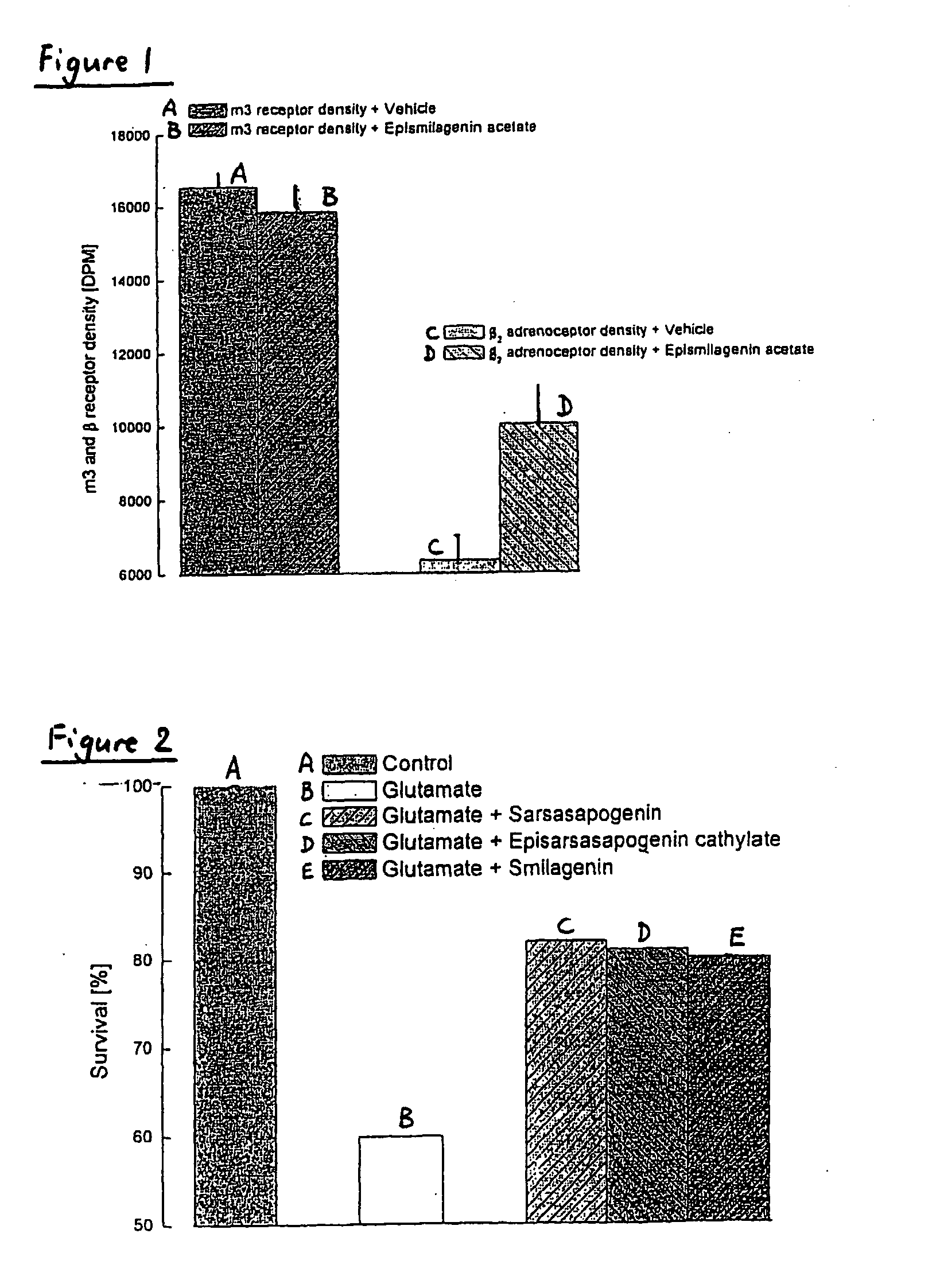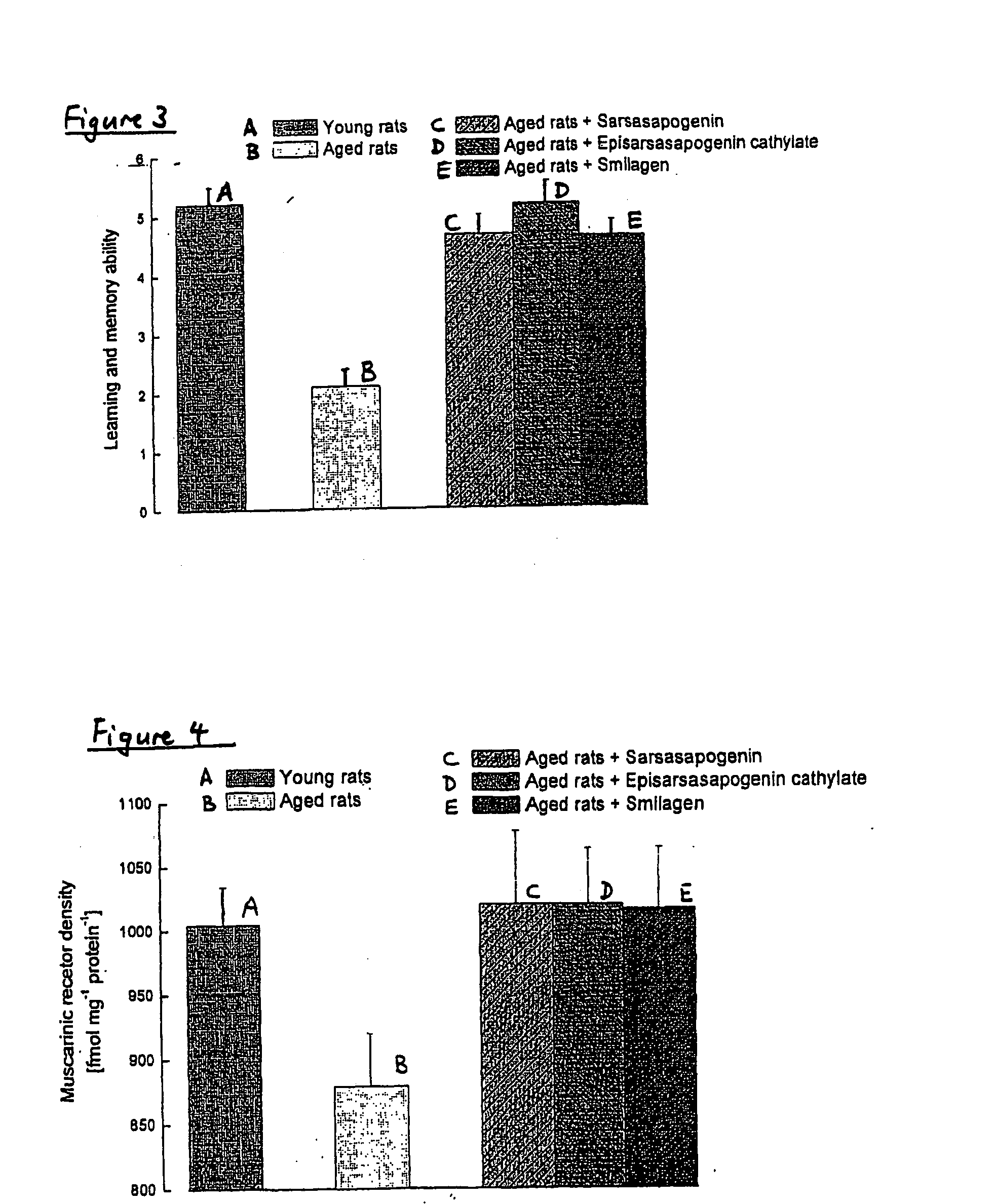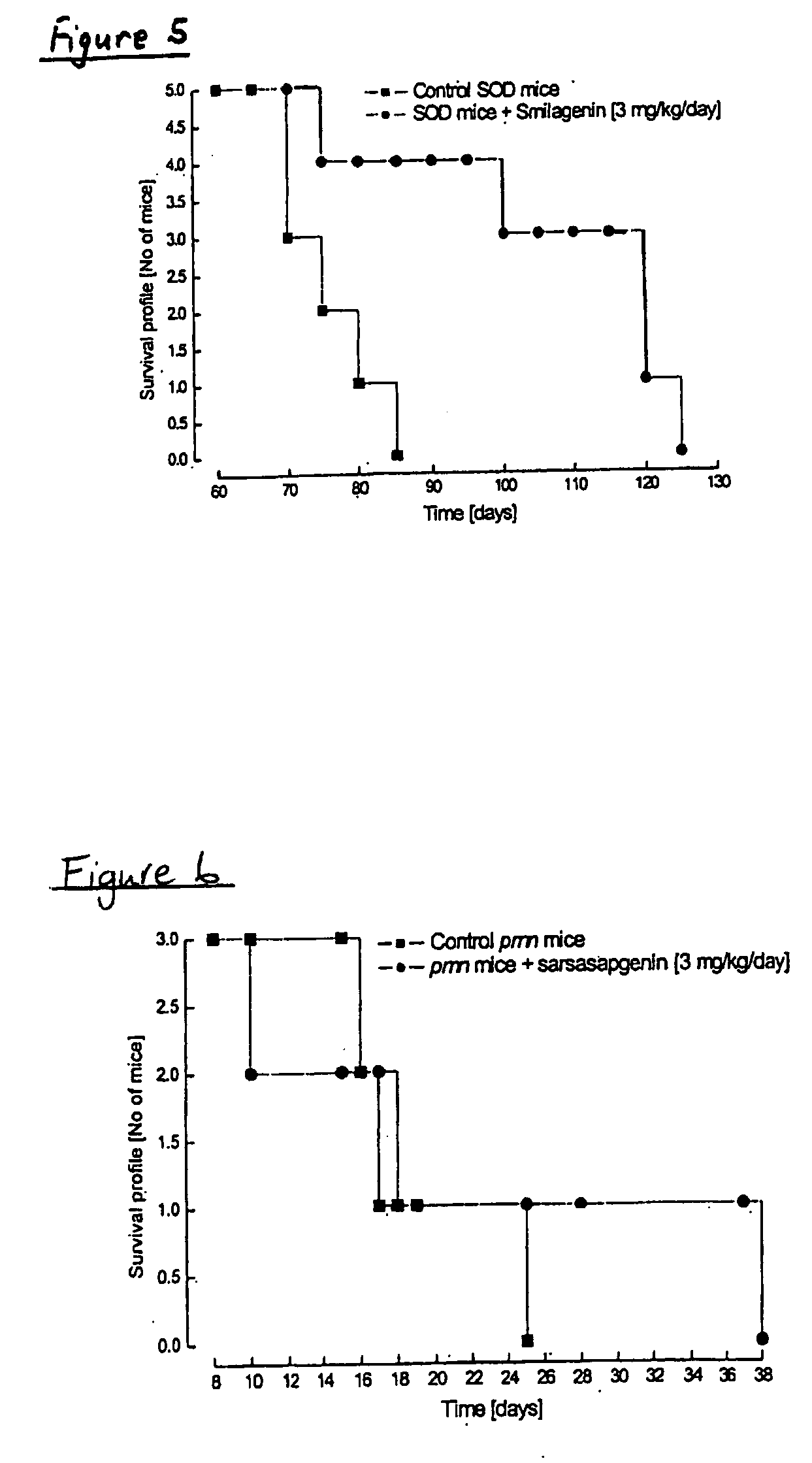Therapeutic methods and uses of sapogenins and their derivatives
a technology of sapogenin and sapogenin derivative, applied in the field of sapogenin, to achieve the effects of increasing the synthesis or release rate, reducing the degradation rate, and increasing the production of another material factor
- Summary
- Abstract
- Description
- Claims
- Application Information
AI Technical Summary
Problems solved by technology
Method used
Image
Examples
example 1
Restoration of Receptor Loss In Vitro
[0231] The effects of epismilagenin cathylate, sarsasapogenin cathylate, episarsasapogenin cathylate, episarsasapogenin succinate, epismilagenin acetate and sarsasapogenin on the expression of muscarinic acetylcholine receptor (m) in CHO cells or β2 and m3 receptors in CHO cells transfected with either a vector for the m receptor or co-transfected with the vector for β2 and m3 receptors were investigated.
[0232] The results are illustrated in Table 1 below and in FIG. 1 of the drawings. Over the culturing period of CHO cells transfected with a vector for the m receptor, treatment with epismilagenin cathylate, sarsasapogenin cathylate, episarsasapogenin cathylate, episarsasapogenin succinate and sarsasapogenin each prevents the decrease in m receptor number. Over the culturing period of the CHO cells co-transfected with the vector for β2 and m3 receptors, the density of the m3 receptor did not alter; whereas the density of the β2 adrenoceptors de...
example 2
Neuroprotective Effect of Sarsasapogenin, Episarsasapogenin Cathylate, Episarsasapogenin, Epismilagenin and Smilagenin in Neurones
[0234] The objective of this study was to examine the effects of sarsasapogenin, episarsasapogenin cathylate, episarsasapogenin, epismilagenin and smilagenin on the survival of rat primary cortical neurones exposed to glutamate, which is known to induce neurodegeneration.
[0235] Rat cortical neurones were cultured for 10 days; at day 10 the medium was changed to a serum-free defined medium. On day 12, 24 hours before glutamate exposure, cultures were washed and medium was replaced with fresh medium containing positive control (β-oestradiol), test compounds (sarsasapogenin, episarsasapogenin cathylate, episarsasapogenin, epismilagenin and smilagenin) or vehicle control (DMSO, 0.25%) or diosgenin as negative control.
[0236] On day 13, cultures were exposed to glutamate. After the incubation period, the cultures were washed with and placed in fresh medium, ...
example 3
Reversal of Neurodegeration by Sarsasapogenin, Smilagenin, 16,22-epoxycoprostan-3β-5 ol, Smilagenone, Smilagenin Glycinate Hydrochloride and Coprosterol in Neurones
[0241] As above mentioned, exposure of rat primary cortical cultures to glutamate (100 μM; 10 min) caused an increase in lactate dehydrogenase (LDH) activity measured after 24 h, indicating a significant neurodegeneration. Treatment with 17β-oestradiol after glutamate exposure produced a significant decrease in the LDH activity compared to neurones exposed to glutamate, suggesting a significant neuroprotective effect. Similarly, treatment with sarsasapogenin, smilagenin, 16,22-epoxycoprostan-3β-ol, smilagenone, smilagenin glycinate hydrochloride and coprosterol produced a significant decrease in the LDH activity compared to neurones exposed to glutamate, suggesting a significant neuroprotective effect (Table 3).
TABLE 3Effect of different compounds on corticalneurones previously exposed to glutamateConditionMean ± s.e.m...
PUM
| Property | Measurement | Unit |
|---|---|---|
| compositions | aaaaa | aaaaa |
| optical isomerism | aaaaa | aaaaa |
| size | aaaaa | aaaaa |
Abstract
Description
Claims
Application Information
 Login to View More
Login to View More - R&D
- Intellectual Property
- Life Sciences
- Materials
- Tech Scout
- Unparalleled Data Quality
- Higher Quality Content
- 60% Fewer Hallucinations
Browse by: Latest US Patents, China's latest patents, Technical Efficacy Thesaurus, Application Domain, Technology Topic, Popular Technical Reports.
© 2025 PatSnap. All rights reserved.Legal|Privacy policy|Modern Slavery Act Transparency Statement|Sitemap|About US| Contact US: help@patsnap.com



